When it comes to deciding what to wear to Pilates, it’s important to choose clothing that is both breathable and flexible. This allows for a full range of motion during exercises, making your workout more comfortable and effective.

Look for materials like spandex or nylon that are breathable and stretchy. Avoid heavy fabrics like denim or cotton that can restrict movement and make you feel uncomfortable.
Some good options include leggings or capris paired with a comfortable tank top or a fitted t-shirt. These types of outfits will not only allow you to move freely, but they will also wick sweat away from your body to keep you cool and dry during your Pilates practice.
By choosing breathable and flexible clothing, you’ll be setting yourself up for success during your Pilates workout.
Opt for Comfortable and Supportive Shoes
Pilates is a barefoot exercise, and typically, people don’t wear shoes during a session. However, some people may have specific foot conditions, such as plantar fasciitis, that require additional support or cushioning. In such cases, it’s essential to choose comfortable and supportive shoes that allow you to perform Pilates exercises without discomfort.
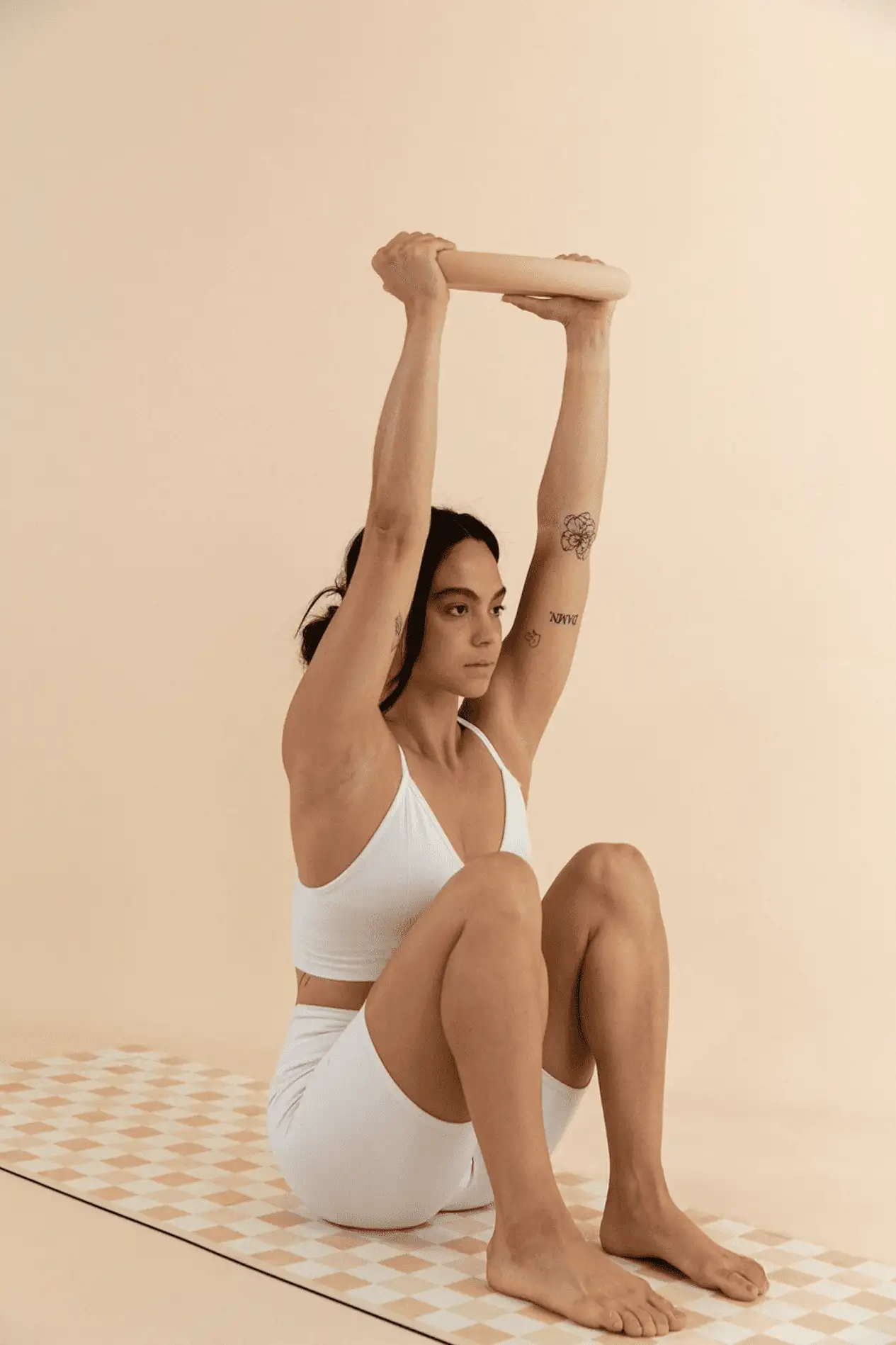
If you do decide to wear shoes for Pilates, make sure they fit correctly and don’t slide or move while you’re working out. Choose shoes that provide stability, cushioning, and support without being too bulky or heavy. Look for shoes with non-slip soles that can help you maintain proper form and prevent injuries.
Avoid shoes with high heels or thick soles, as they can throw off your balance and prevent you from engaging your core muscles properly. Instead, opt for shoes with flat, flexible soles that allow for natural foot movement and increased control.
If you’re unsure about what type of shoes to wear for your Pilates session or have any foot concerns, it’s always best to consult with your instructor or a podiatrist.
Remember that the key to a successful Pilates workout is to dress in comfortable and practical clothing and footwear that allows for maximum range of motion and doesn’t restrict your movements. By choosing the right footwear, you can ensure that your feet are adequately supported and protected while performing Pilates exercises.
Consider the Type of Pilates Class You’ll Attend
When choosing what to wear to Pilates, it’s important to consider the type of class you’ll be attending. Some classes may focus more on mat-based exercises, while others may incorporate equipment such as reformer machines. Here are some tips for dressing appropriately based on the type of class:
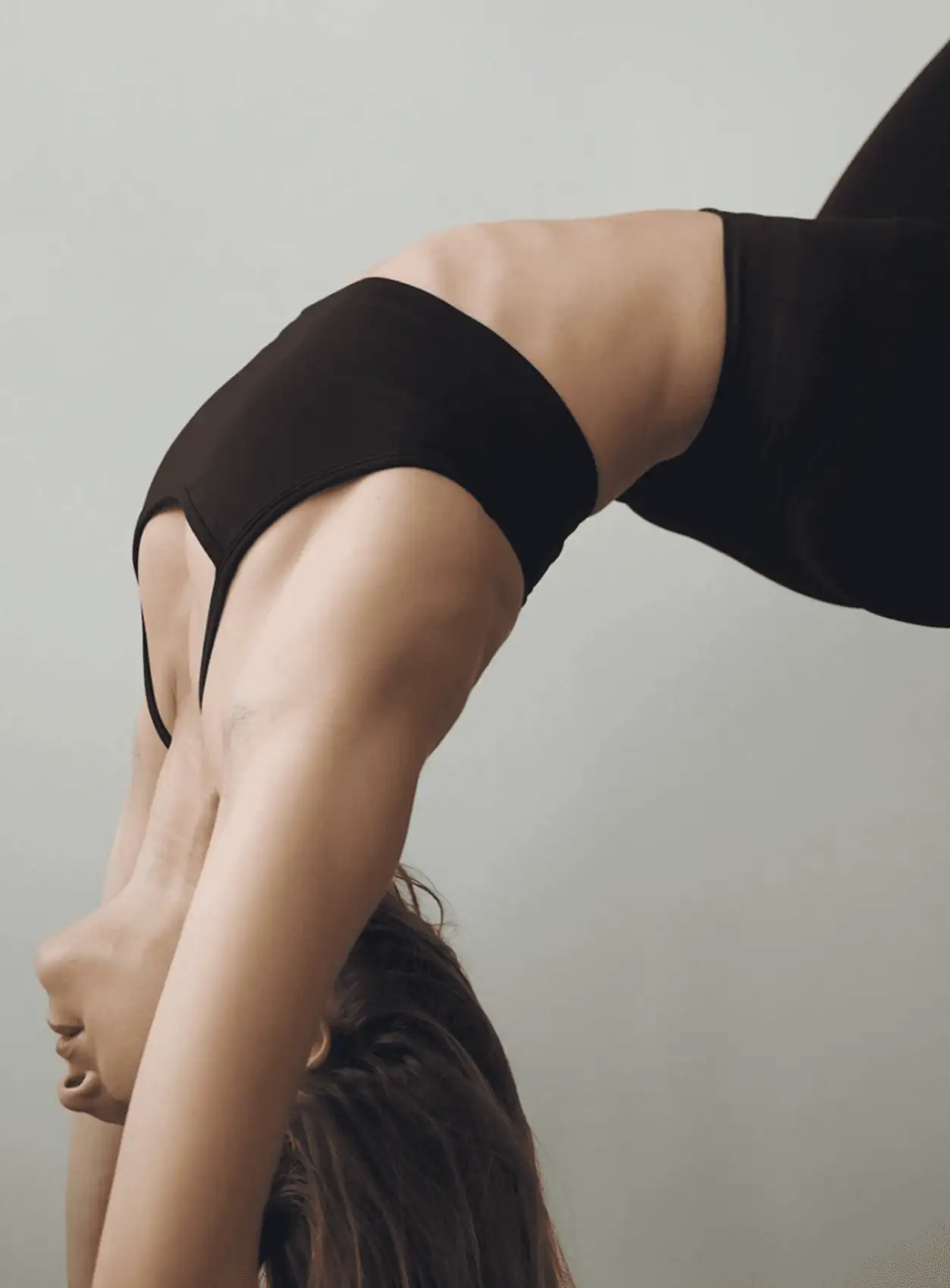
- If you’re attending a mat-based class, wear form-fitting clothing that allows you to move freely and won’t get in the way during exercises. Leggings, fitted shorts, and breathable tank tops are good options. Avoid baggy clothing that may get caught or tangled during stretches.
- If you’ll be using Pilates equipment, such as a reformer machine, opt for clothing that won’t limit your range of motion. Fitted leggings or pants and a form-fitting top are good choices. Avoid loose or baggy clothing that may get caught in the equipment.
- If you’re attending a hot Pilates class, wear moisture-wicking clothing that will keep you cool and dry. Loose, flowy tops may be more comfortable during a hot class, but make sure they won’t get in the way during exercises.
By considering the type of class you’ll be attending, you can ensure you’re dressed appropriately and comfortably for your Pilates workout.
Avoid baggy or loose clothing
While it’s always important to wear comfortable clothing to a Pilates class, it’s also crucial to avoid baggy or loose clothing. Clothes that are too loose can get caught in the equipment and decrease your range of motion during exercises.
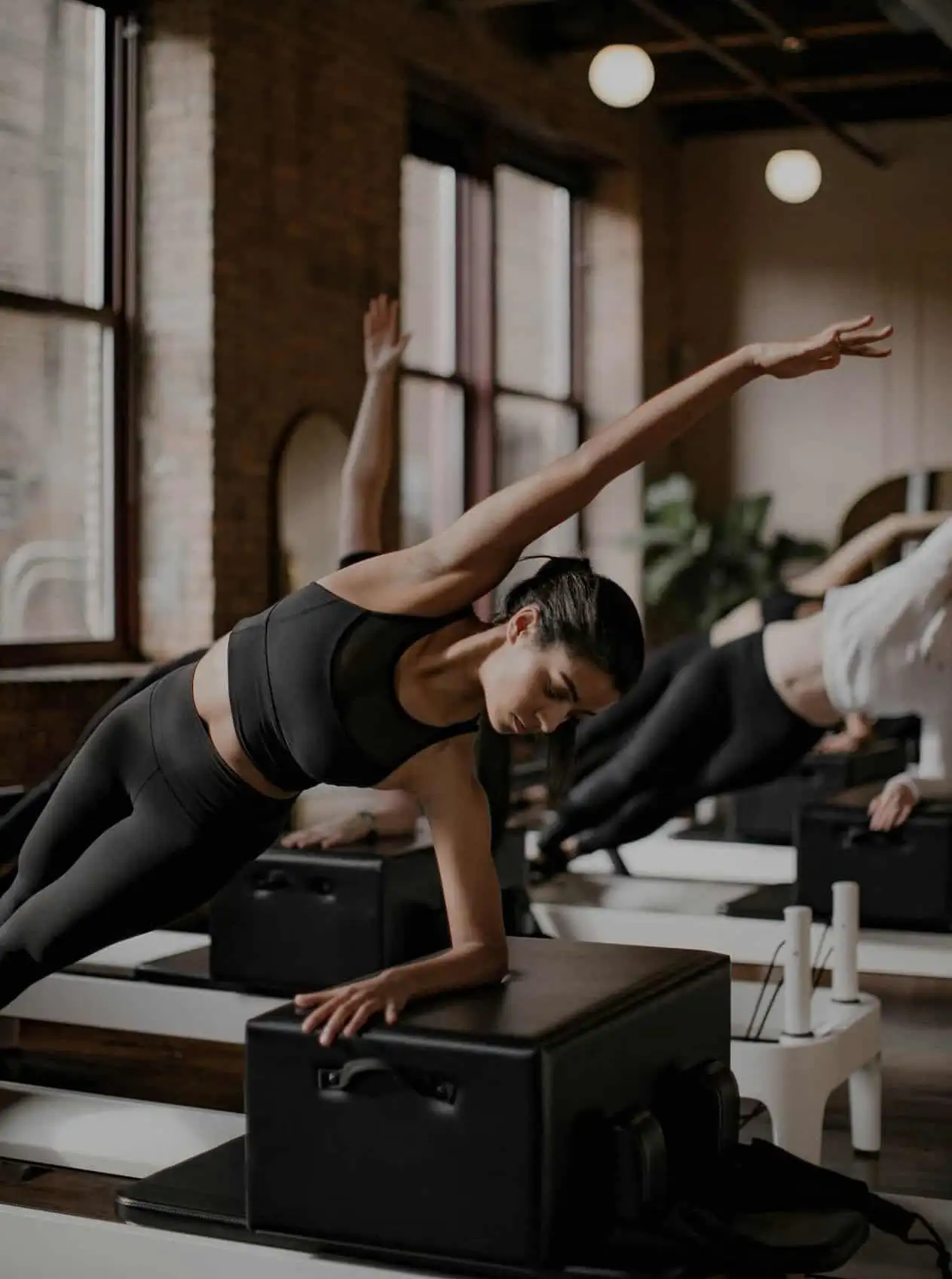
When doing Pilates, you want to be able to see the lines of your body to avoid twisting or straining your muscles. This is why wearing form-fitting clothes is recommended. Capri leggings or fitted shorts are good options for bottoms, while a fitted tank top or a shirt that stays in place works great for the top. Avoid wearing anything bulky or oversized, like sweatpants or baggy t-shirts, as it can impact your mobility during class.
Investing in a few basics like well-fitted leggings or a sports bra can make all the difference in your Pilates workout, allowing you to move with ease and get the most out of your session. Remember, the right clothing can improve your performance and keep you comfortable throughout your workout.
Don’t forget to bring a water bottle and towel
One of the most important things you should bring to your Pilates class is a water bottle. Keeping yourself hydrated during the entire session is necessary since you’ll be doing a lot of movements and exercises that will make you sweat. You don’t want to feel thirsty halfway through the class and end up feeling dizzy or lightheaded.
In addition, don’t forget to bring a towel to your Pilates class. A towel’s primary purpose is to wipe away sweat during the session, but it can also be used as a prop for specific exercises. Towels come in different sizes, so choose one that is big enough to fit both you and your mat.
Investing in a quality water bottle and towel is a good idea, especially if you plan to attend Pilates classes regularly. You can choose an eco-friendly water bottle to reduce your plastic waste, and a microfiber towel that dries quickly and is easy to clean after each use.
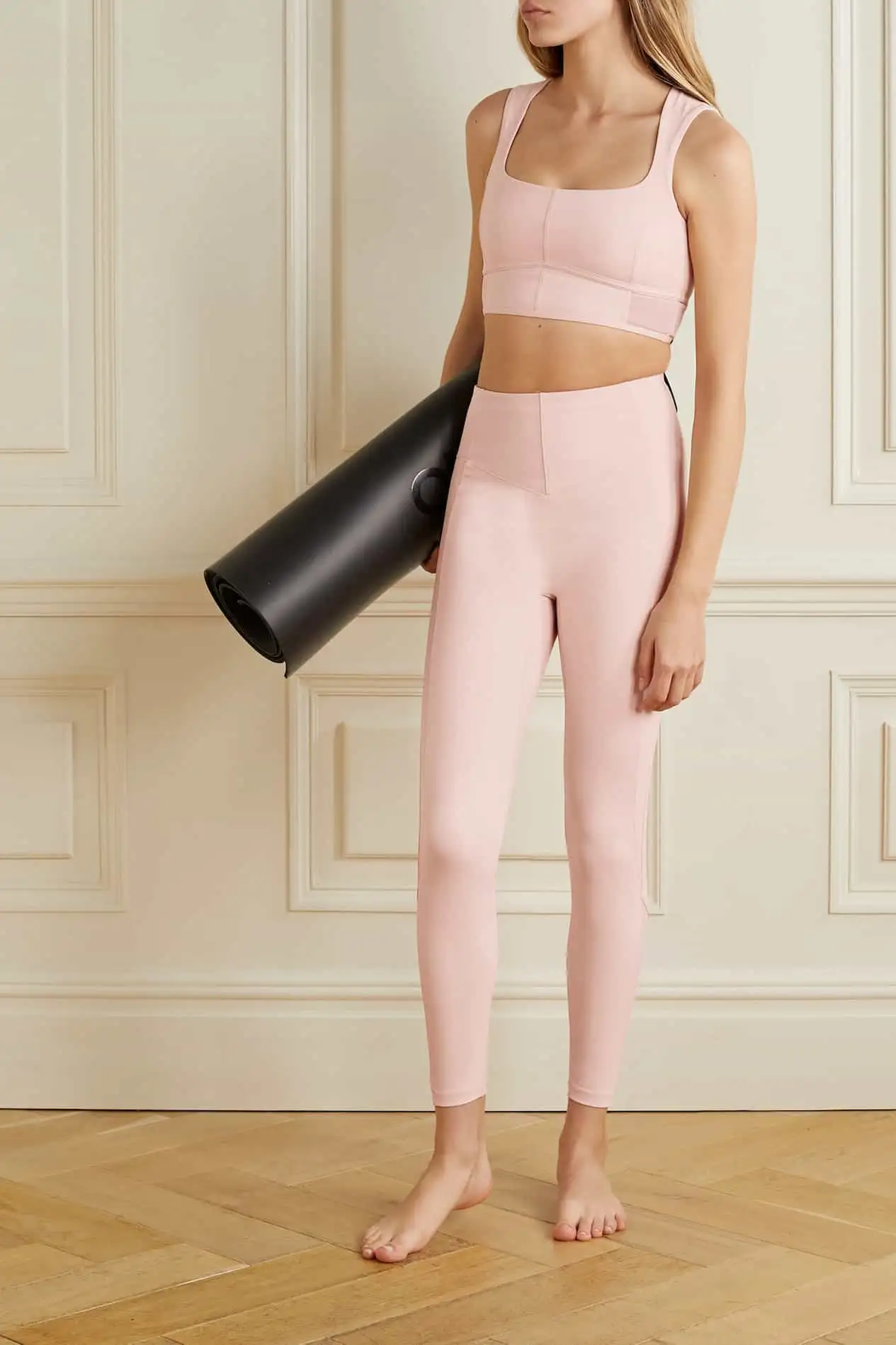
Accessorize with Hair Ties and Grippy Socks
In addition to wearing comfortable and flexible clothing, accessorizing with the right gear can enhance your Pilates experience. Here are some tips:
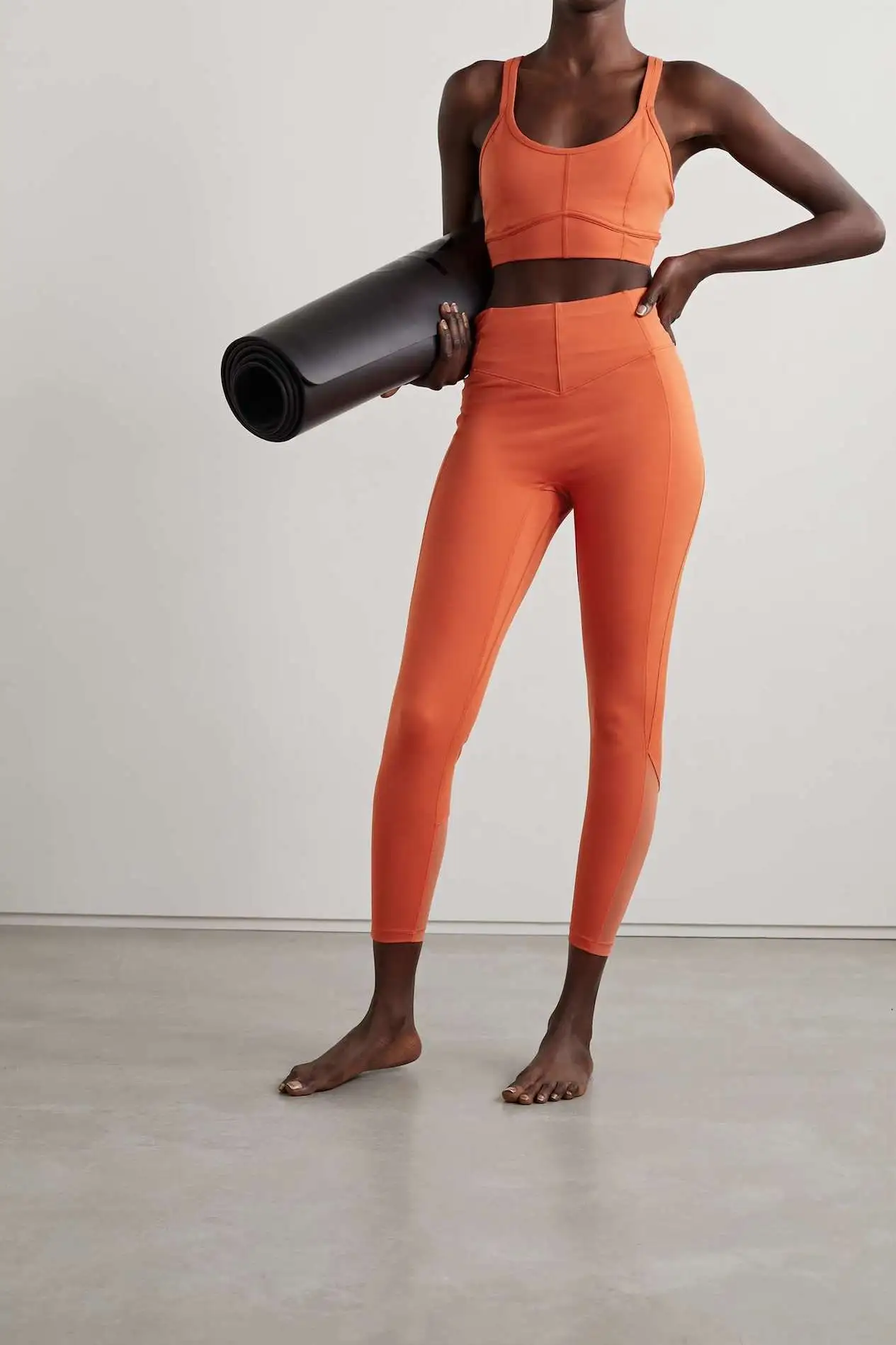
Hair Ties
Since Pilates involves a lot of movements that require lying down or tilting your head, it’s important to keep your hair out of your face. Use a hair tie to secure your ponytail or bun so you can stay focused and comfortable throughout the class.
Grippy Socks
Most Pilates studios require or recommend wearing grippy socks, which feature rubber or silicone dots on the sole to provide better traction on the studio’s floor. This will help you maintain your balance during standing and balancing moves, and prevent slipping during movements on the reformer or other equipment.
Investing in a pair of grippy socks is not only hygienic but also crucial to your safety during your Pilates workout. They come in different styles and colors, so you can choose one that fits your personality and style.
Accessorizing with hair ties and grippy socks is a small but important detail that can make a big difference in your Pilates practice. So, don’t forget to include them in your Pilates wardrobe for added safety, comfort, and style.
Conclusion: Dress for comfort and practicality for a successful Pilates workout
When it comes to Pilates, dressing for comfort and practicality is key to a successful workout. Choose breathable and flexible clothing that allows you to move freely and won’t restrict your movements. Opt for comfortable and supportive shoes that will help you maintain your balance and stability.

Consider the type of Pilates class you’ll attend and dress accordingly. Avoid baggy or loose clothing that may get in the way or add bulk to your movements. Don’t forget to bring a water bottle and towel to stay hydrated and comfortable during your workout.
In addition to the essentials, accessorize with hair ties and grippy socks to avoid slipping and sliding during certain exercises. Remember, dressing for Pilates should prioritize your comfort and mobility. By following these tips and tricks, you’ll be dressed for success and ready to conquer any Pilates class.
